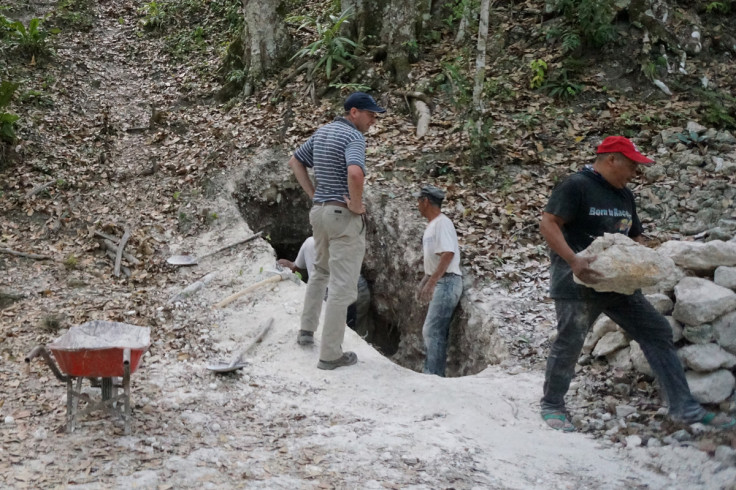Guatemala: Royal tomb of King Bakab K'inich discovered in ruins of Mayan city El Zotz

A royal tomb containing the Maya king Bakab K'inich has been discovered in the ruins of the ancient city of El Zotz in Guatemala. The discovery was made by archaeologists from the University of Southern California in the Five Temples section of the ancient site, located in the Maya Biosphere Reserve.
This is the second royal tomb to be uncovered at El Zotz. In 2010, a team of researchers found the tomb of a Maya king beneath the Temple of the Night Sun in the El Diablo Pyramid – which is located on top of a hill across from the Five Temples.
"It smelled like death," Tom Garrison, who led the latest excavation, said of the earlier find. The discovery later gained international recognition and was named one of National Geographic's discoveries of the year. The tomb contained sacrificed children, bejewelled teeth and bowls of human fingers.

Initially, archaeologists had been searching for a second tomb in front of the original chamber – on the basis of designs of other contemporary Mayan temples. However, this search drew a blank.
Instead, the latest tomb was found by accident when one of the archaeologists was cleaning off a low platform. The platform gave way, revealing a small opening. Inside the tomb, they found four polychrome bowls, one of which bore the name Bakab K'inich, which translates roughly to "the sun god who is first in the land". Unfortunately rats had destroyed any organic matter, but the team said the find should still shed further light on the Mayan city and its inhabitants.
El Zotz was spread across an area spanning two square kilometres. The site houses a massive palace and a temple on a hill. It was somewhat dwarfed by Tikal, a larger and more powerful city located around 20km to the west. Researchers believe it would have been subjected to attacks from Tikal – but because of this, it has provided a great deal of information about the regions changing political dynamics.
Commenting on the latest discovery, Garrison said: "You never know what's out there, and you never know what you're going to find in any given year. That's the mystery, and part of the appeal, of archaeology."
© Copyright IBTimes 2025. All rights reserved.






















